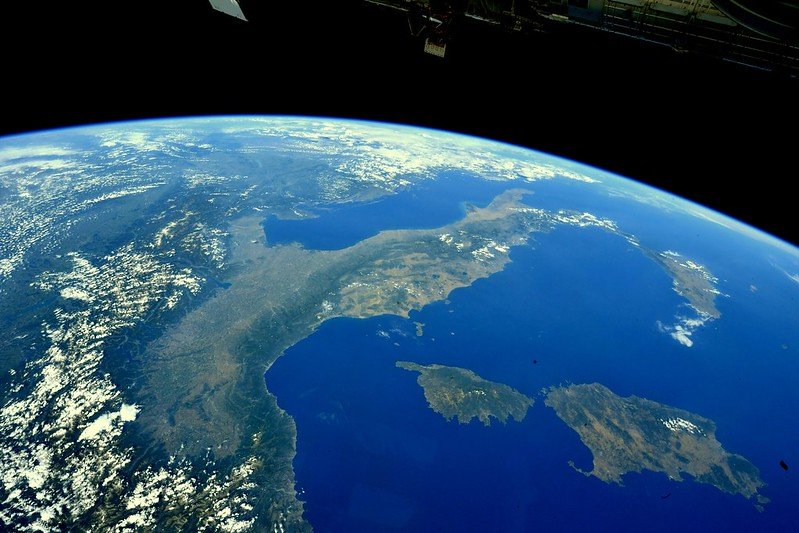On March 6, 2025, Italy’s Chamber of Deputies approved Disegno di Legge N. 1415, a landmark legislative proposal aimed at regulating and promoting the nation’s space economy. Presented by Prime Minister Giorgia Meloni and Minister of Enterprises and Made in Italy Adolfo Urso, the bill reflects Italy’s strategic ambition to position itself as a key player in the global space sector.
The legislation, linked to public finance measures under Article 126-bis of Italy’s parliamentary regulations, introduces a robust framework for space activities, balancing innovation, security, sustainability, and international cooperation.
National Security as a Core Pillar
The legislation establishes a rigorous authorization process for space activities, overseen by the Interministerial Committee for Aerospace Policies (COMINT) and the Ministry of Defense. Applications for space operations—whether for satellite launches, orbital deployments, or resource extraction—undergo stringent security reviews. COMINT, which includes defense representatives, evaluates risks such as threats to critical infrastructure, cybersecurity vulnerabilities, or potential exploitation by adversarial states. Licenses may be denied if activities involve ties to entities linked to terrorism, undemocratic regimes, or actions conflicting with Italy’s geopolitical stance. This vetting process ensures that private-sector advancements in space technology do not inadvertently undermine national security.
Exemptions for Military and Intelligence Activities
A critical carve-out in the law exempts activities conducted by the Ministry of Defense and intelligence agencies from its regulatory scope. Military satellite launches, reconnaissance missions, and other classified operations remain governed by separate defense protocols, preserving the secrecy required for national security operations. This exemption underscores the law’s dual purpose: fostering a competitive civilian space economy while insulating defense-related activities from public scrutiny and bureaucratic delays.
Cybersecurity and Infrastructure Resilience
The law mandates robust cybersecurity measures for private operators, recognizing satellites and ground stations as potential targets for hostile actors. Companies must implement encryption, backup systems, and protocols to detect and respond to cyberattacks or physical interference. These requirements align with broader NATO and EU cybersecurity frameworks, ensuring Italy’s space infrastructure remains resilient against hybrid threats. Additionally, the legislation prioritizes the creation of a national satellite communications reserve (Art. 25), designed to secure government communications during emergencies. This reserve relies on EU or NATO-affiliated operators, reducing dependency on foreign satellites and mitigating risks of espionage or sabotage.
Liability and State Recourse
In alignment with international treaties, the law holds operators strictly liable for damages caused by their space activities, such as collisions or debris impacts. However, it also grants the Italian government recourse to recover costs if the state is held internationally liable for such incidents. For example, if a privately operated satellite damages another nation’s asset, Italy could seek reimbursement from the operator, ensuring taxpayers are not burdened by corporate negligence. This provision indirectly safeguards defense budgets by shifting financial risks to private entities.
Space as an Extension of National Territory
One of the law’s most groundbreaking aspects is its treatment of Italian-registered space objects as extensions of national territory under criminal jurisdiction (Art. 30). This means acts of sabotage, espionage, or unauthorized interference with Italian satellites or space stations—whether in low-Earth orbit or beyond—could be prosecuted under Italian law, even if the perpetrators are foreign nationals. This legal expansion reinforces Italy’s sovereignty in space, deterring adversarial actions against its assets.
Dual-Use Technologies and Export Controls
The legislation defers to existing defense export regulations, such as Law 185/1990, for technologies with both civilian and military applications. Components like high-resolution imaging systems or propulsion technologies, which could be repurposed for defense, require approval under strict export controls. This ensures compliance with international arms treaties and NATO agreements, preventing sensitive know-how from reaching adversarial states.
Collaboration with NATO and EU Allies
The law emphasizes collaboration with NATO and EU partners in developing secure space infrastructure. For instance, criteria for spaceport construction prioritize partnerships with allied nations, while spectrum management initiatives aim to harmonize satellite communications with NATO standards. Such alignment strengthens collective defense capabilities, ensuring Italy’s space activities contribute to broader Western security architectures.
Strategic Implications and Challenges
By embedding defense priorities into its space economy framework, Italy aims to balance innovation with security. The law’s focus on cybersecurity, jurisdictional control, and military exemptions reflects a nuanced understanding of space as a contested domain. However, critics argue that the opacity surrounding military exemptions could hinder accountability, while the reliance on private-sector compliance may strain oversight mechanisms. Additionally, the law’s success hinges on sustained funding and international cooperation, particularly as global competition in space intensifies.
In summary, Italy’s legislation represents a sophisticated effort to harmonize economic ambition with defense imperatives. By regulating private space activities through a security-centric lens, the country seeks to protect its interests while positioning itself as a responsible and innovative actor in the global space arena.
A Modern Regulatory Landscape for Space Activities
At its core, DDL 1415 establishes a detailed framework that governs the access to and utilization of space by both national and international operators. The law is structured into several titles, each addressing key elements of space regulation:
- General Provisions and Definitions:
The law introduces precise definitions for “attività spaziale” (space activity), outlining the scope of operations—from satellite launches and orbital management to activities on celestial bodies. By clearly delineating what constitutes a space operation, the legislation ensures that all relevant stakeholders operate under a uniform set of rules . - Licensing and Authorization Procedures:
One of the law’s central components is the authorization process for conducting space activities within Italian territory. Operators, regardless of nationality, must obtain formal permits. The procedure emphasizes technical, safety, and environmental requirements. Notably, the process integrates evaluations by the Italian Space Agency (Agenzia Spaziale Italiana) and oversight by interministerial committees, including the COMINT, ensuring that both national security and international obligations are respected. - Safety, Liability, and Insurance Requirements:
DDL 1415 imposes rigorous standards to guarantee the safe execution of space missions. Operators must meet strict technical criteria—from safeguarding against collision risks and mitigating space debris to ensuring robust cybersecurity measures. Furthermore, the law establishes substantial liability measures: operators are required to secure insurance or an equivalent financial guarantee covering damages up to 100 million euros per incident, with scaled provisions for research-oriented and startup enterprises . - Registration of Space Objects:
In line with international treaties such as the 1975 Registration Convention, the law mandates the creation and maintenance of a national registry. This registry, managed by the Italian Space Agency, will provide a transparent and systematic record of all space objects launched under Italy’s jurisdiction, reinforcing the country’s commitment to international norms. - Economic Promotion and National Infrastructure:
Recognizing space as a strategic economic frontier, the law introduces a National Space Economy Plan and establishes a dedicated fund of 35 million euros (for the year 2025) aimed at fostering technological innovation, production capacity, and commercial exploitation of space-related technologies. Special provisions also support small and medium enterprises (SMEs) and startups by promoting public–private partnerships and reserving a portion of public procurement for innovative companies.
Strategic Implications for National Competitiveness
By integrating detailed safety protocols with robust economic incentives, DDL 1415 is set to enhance Italy’s competitiveness on both the European and global stages. The law not only aims to streamline the regulatory process for space operations but also to stimulate investments in research and development, encouraging collaboration between public institutions and private enterprises.
- Enhanced National Security:
With a focus on risk mitigation—from the prevention of space debris hazards to the maintenance of secure communication channels—the law reinforces Italy’s preparedness to manage both commercial and defense-related space activities. - Economic and Technological Innovation:
The establishment of financial instruments and support measures paves the way for a vibrant space industry ecosystem. By lowering entry barriers for startups and SMEs, Italy is positioning itself as a hub for innovation, with potential spillover benefits to other high-tech sectors. - International Alignment and Cooperation:
The law is carefully calibrated to conform with international treaties and best practices. By providing for mutual recognition of authorizations granted by other states under equivalent regulatory frameworks, Italy demonstrates its commitment to collaborative space governance.
Featured Image Credit: ESA/NASA-S.Cristoforetti







